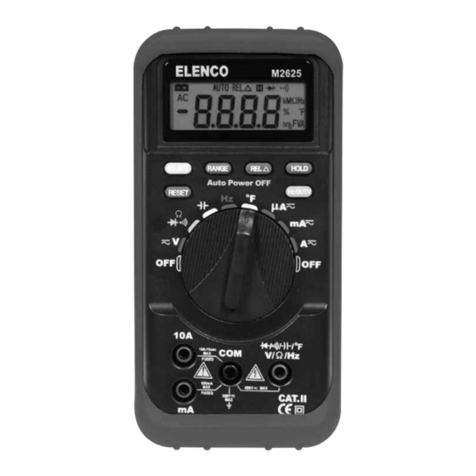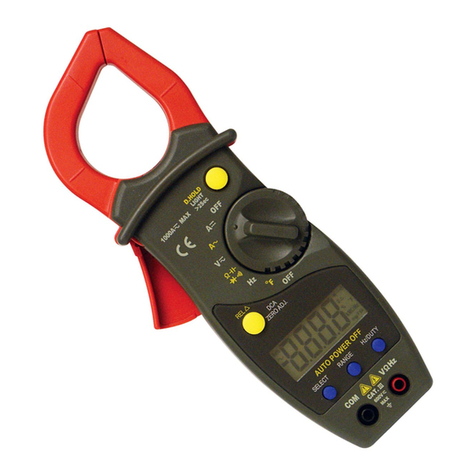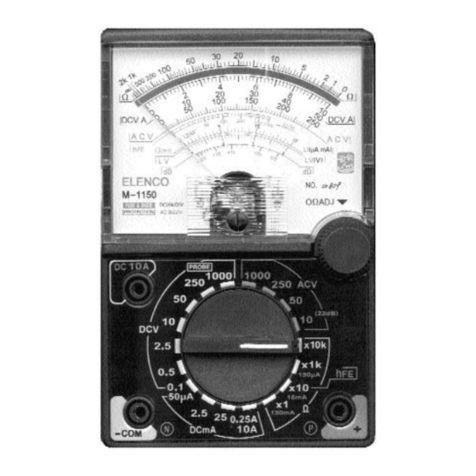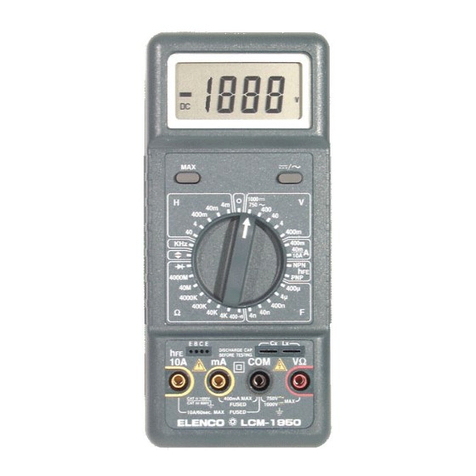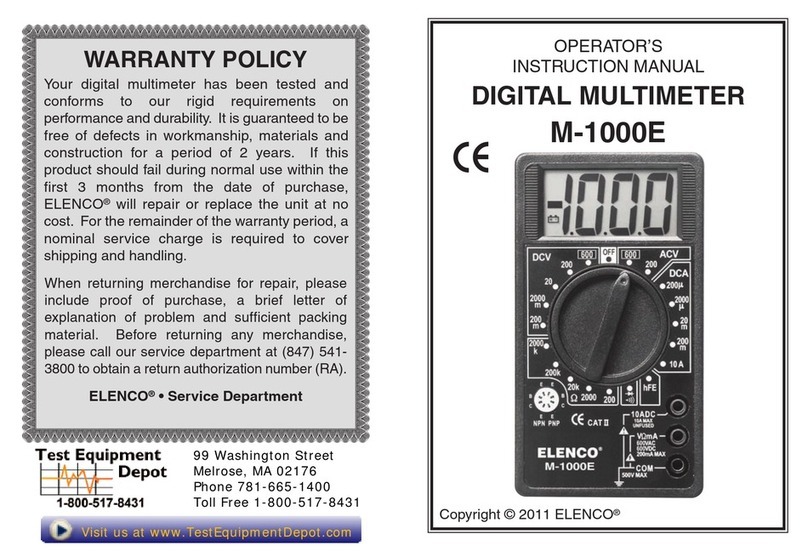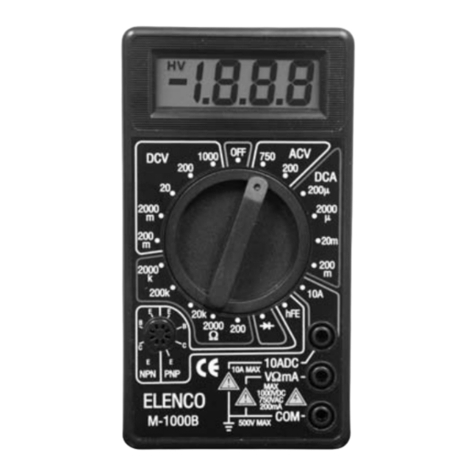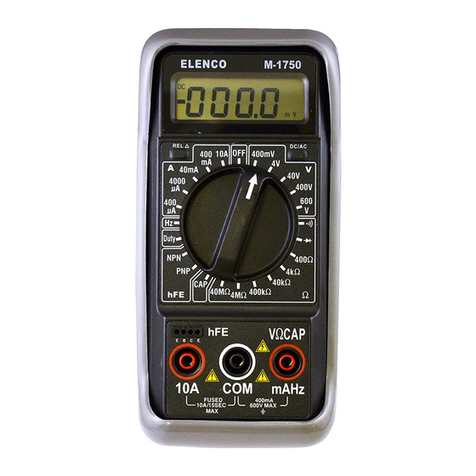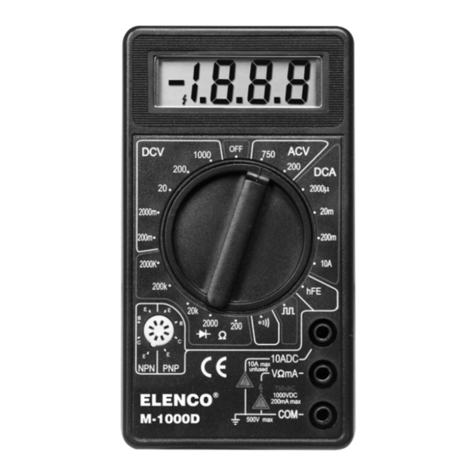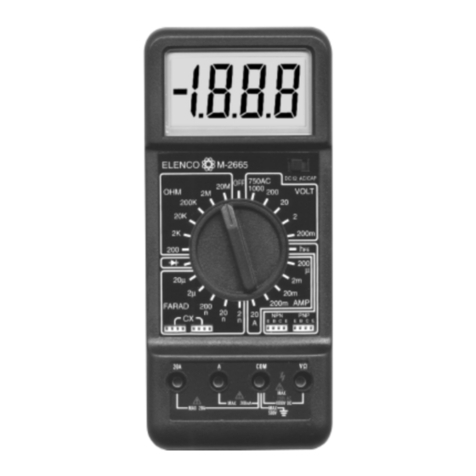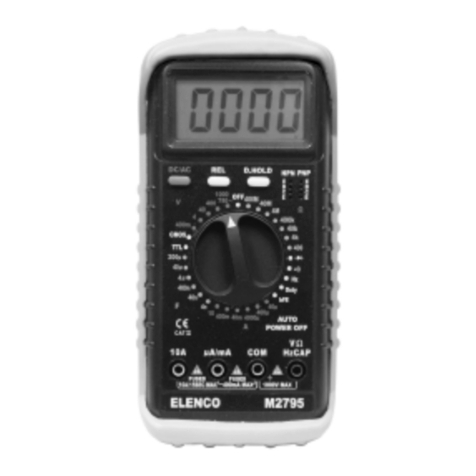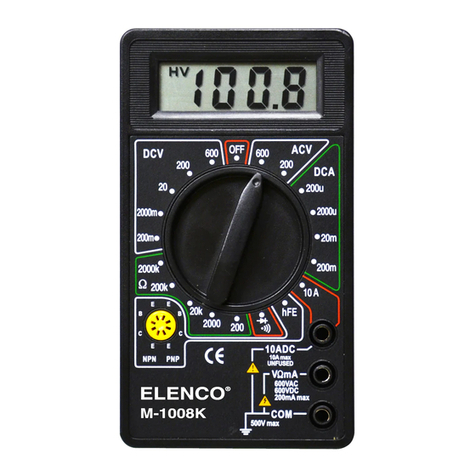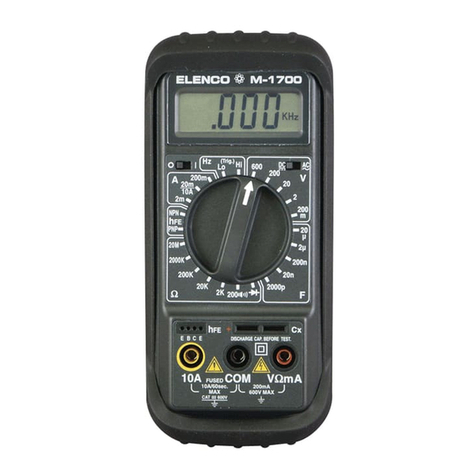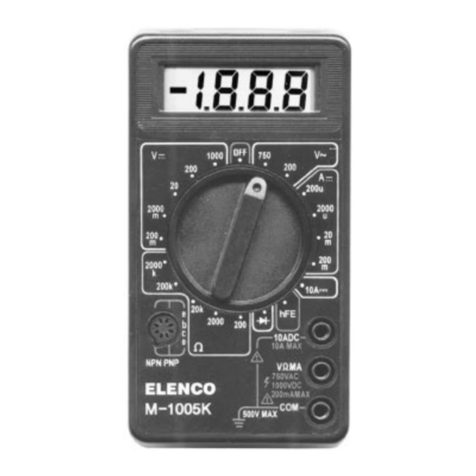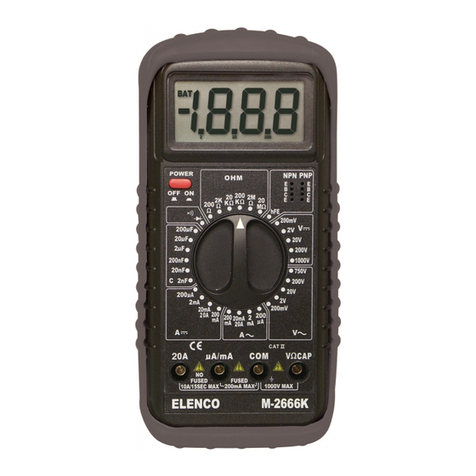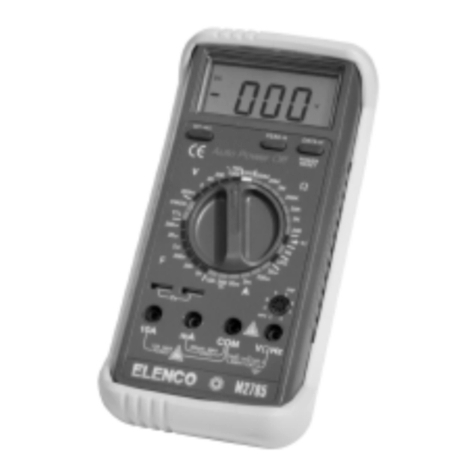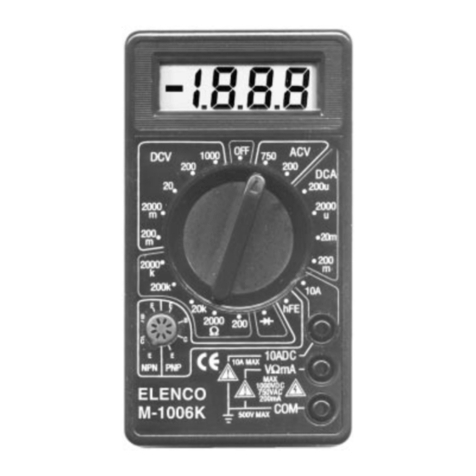-2-
CONSTRUCTION
Introduct on
Assembly of your M-115 Analog Multimeter Kit will prove to be an exciting project and give you much satisfaction and personal
achievement. If you have experience in soldering and wiring techniques, then you should have no problem with the assembly
of this kit. Care must be given to identifying the proper components and in good soldering habits. Above all, take your time
and follow these easy step-by-step instructions. Remember, An ounce of prevention is worth a pound of cure. Avoid making
mistakes and no problems will occur.
CAUTION: WEAR SAFETY GLASSES WHEN ASSEMBLING THIS KIT.
Assemble Components
In all of the following assembly steps, the components must be installed on the top side of the PC board unless otherwise indicated. The
top legend shows where each component goes. The leads pass through the corresponding holes and the board is turned to solder the
component leads on the foil side. Solder immediately unless the pad is adjacent to another hole which will interfere with the placement
of the other component. Cut excessive leads with a diagonal cutter. Then, place a check mark in the box provided next to each step to
indicate that the step is completed. Be sure to save the extra leads for use as jumper wires if needed.
Solder ng
The most important factor in assembling your multimeter is good soldering techniques. Using the proper soldering iron is of prime
importance. A small pencil type soldering iron of 25 - 4 watts is recommended. The t p of the ron must be kept clean at all
t mes and well t nned. Many areas on the PC board are close together and care must be given not to form solder shorts. Size
and care of the tip will eliminate problems.
For a good soldering job, the areas being soldered must be heated sufficiently so that the solder flows freely. Apply the solder
simultaneously to the component lead and the component pad on the PC board so that good solder flow will occur. Be sure that
the lead extends through the solder smoothly indicating a good solder joint. Use only ros n core solder of 60/40 alloy. DO NOT
USE ACID CORE SOLDER! Do not blob the solder over the lead because this can result in a cold solder joint.
1. Solder all components from
the copper foil side only.
Push the soldering iron tip
against both the lead and
the circuit board foil.
Component Lead
Soldering Iron
Circuit Board
Foil
2. First apply a small amount
of solder to the iron tip. This
allows the heat to leave the
iron and onto the foil.
Immediately apply solder to
the opposite side of the
connection, away from the
iron. Allow the heated com-
ponent and the circuit foil to
melt the solder.
Solder
Soldering Iron
Foil
Example 1
Poor solder connections occur
when the lead is not heated
sufficiently. The solder will not
flow onto the lead as shown. To
correct. reheat the connection
and, if necessary, apply a small
amount of additional solder to
obtain a good connection.
Solder does not flow onto the
lead. A hard rosin bead sur-
rounds and insulates the con-
nection.
Poor solder
connection
Mount Part
Soldering iron posi-
tioned incorrectly.
Example 2
A solder bridge occurs when
solder runs between circuit
paths and creates a short cir-
cuit. This is usually caused
by using too much solder. To
correct this, simply drag your
soldering iron across the sol-
der bridge as shown.
4. Here is what a good sol-
der connection looks like.
Cut off excess leads.
3. Allow the solder to flow
around the connection.
Then, remove the solder
and the iron and let the con-
nection cool. The solder
should have flowed
smoothly and not lump
around the wire lead.
Solder Soldering Iron
Foil
Bend Leads to Hold Part Solder and Cut Off Leads
Rx - 1 Ω5% 1/4W Resistor
(brown-black-brown-gold)
Foil Side
þ
